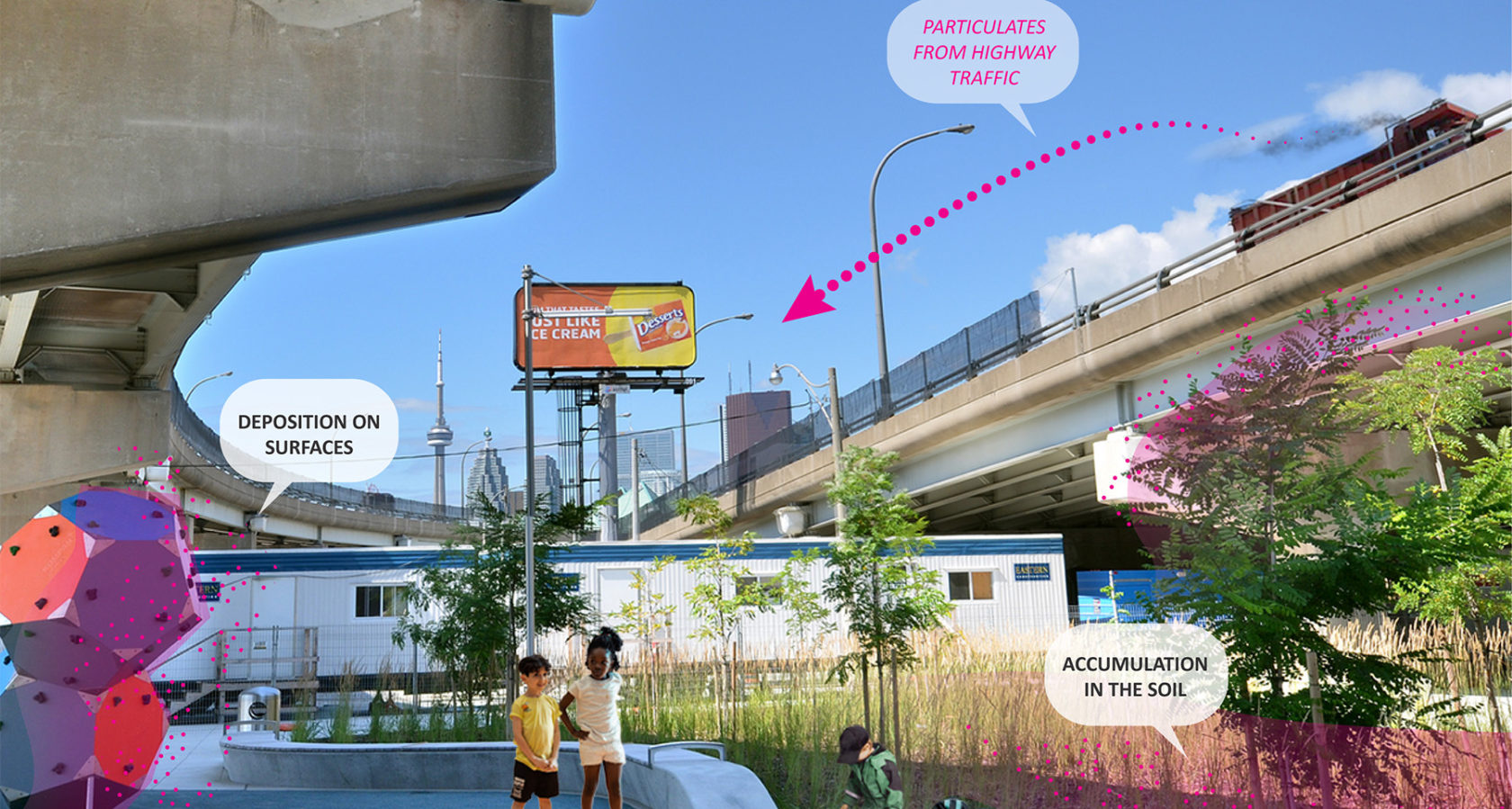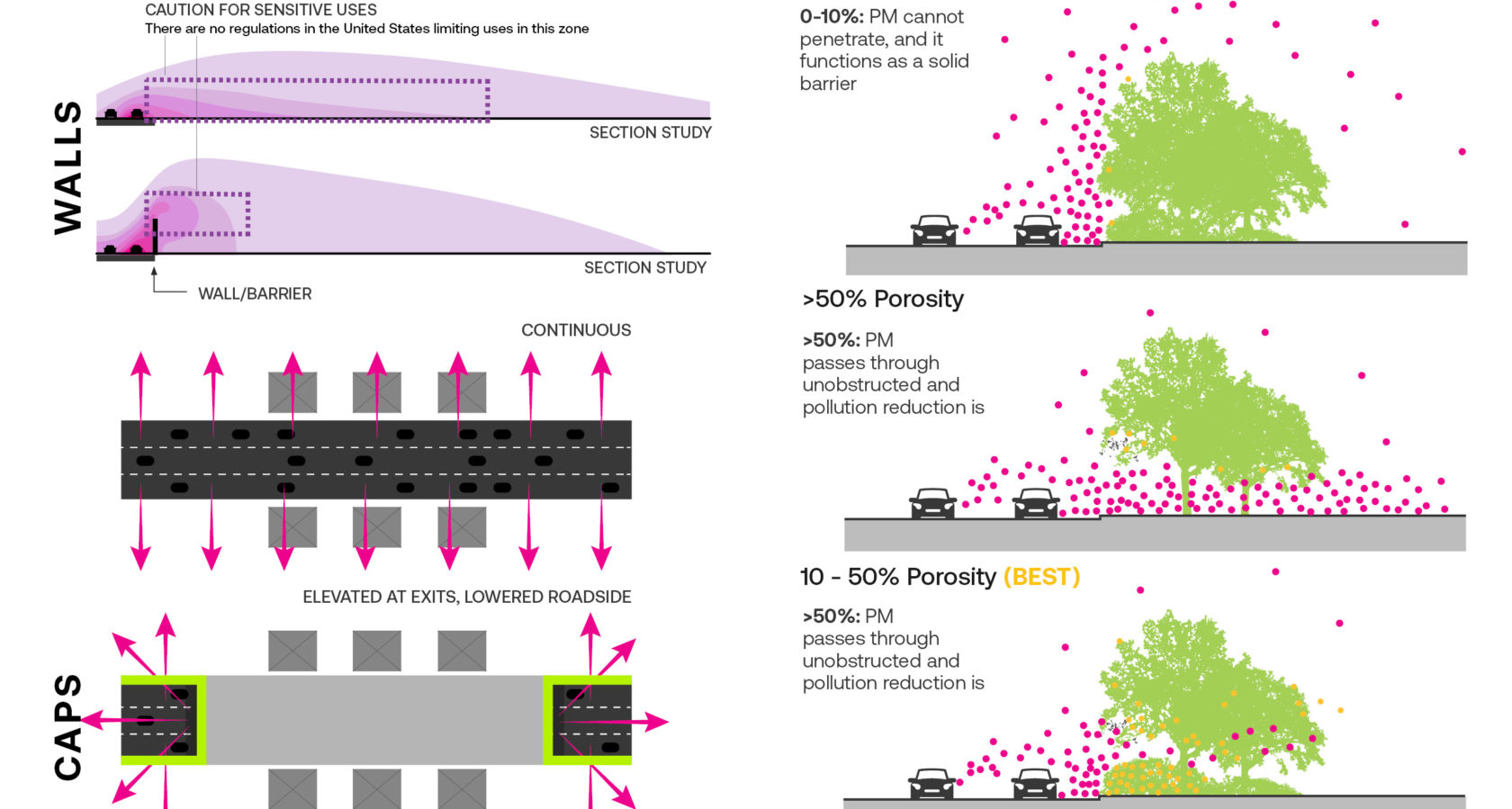As urban populations continue to grow, landscapes that are located in close proximity to major highways are becoming a more familiar location for public parks and activation. Major roadways are primary sources for traffic-related air pollution (TRAP), with numerous negative health outcomes linked to TRAP. This study focuses on a quantitative assessment of heavy metals and polycyclic aromatic hydrocarbons accumulations in public landscapes in order to better understand exposure to near-road pollution.
Based in Philadelphia along a segment of the I-95 corridor, the study evaluates the dangers to quality of life, air quality, and the human body in relation to public spaces within close proximity of major roadways. Sites near sources of traffic pollution are prone to the settlement of airborne pollutants, creating secondary inhalation and tactile exposure of particulate matter (PM). Accumulation of adverse PM can occur in absorptive materials, such as soils in community gardens, and on interactive surfaces, such as play equipment. By utilizing a variety of research methods, OJBLAB and Braun Intertec are collecting and interpreting data to better understand how quickly sites are becoming permanently impacted by settled PM in soil and collected on surfaces. Field-testing, including monitoring air quality and conducting soil and swab testing, interdisciplinary engagement, and development of multi-group engagement methods will create multi-dimensional results that will provide pivotal insight into the future of landscape design and programmatic recommendations. This study adds to the limited existing research on rates of deposition in urban parks over time to increase understanding of how a new site accumulates contaminants.
The research analysis is expected to continue through February 2022.



